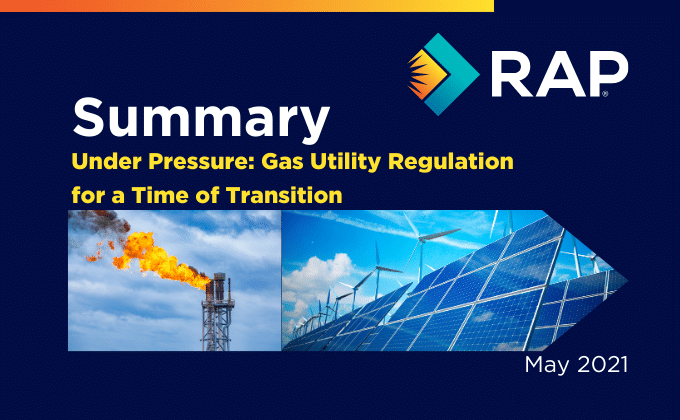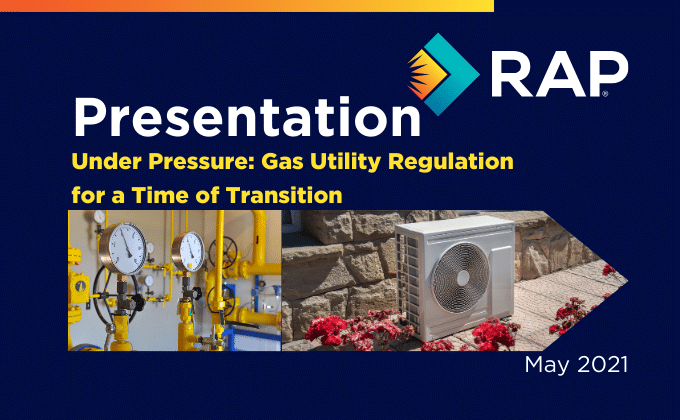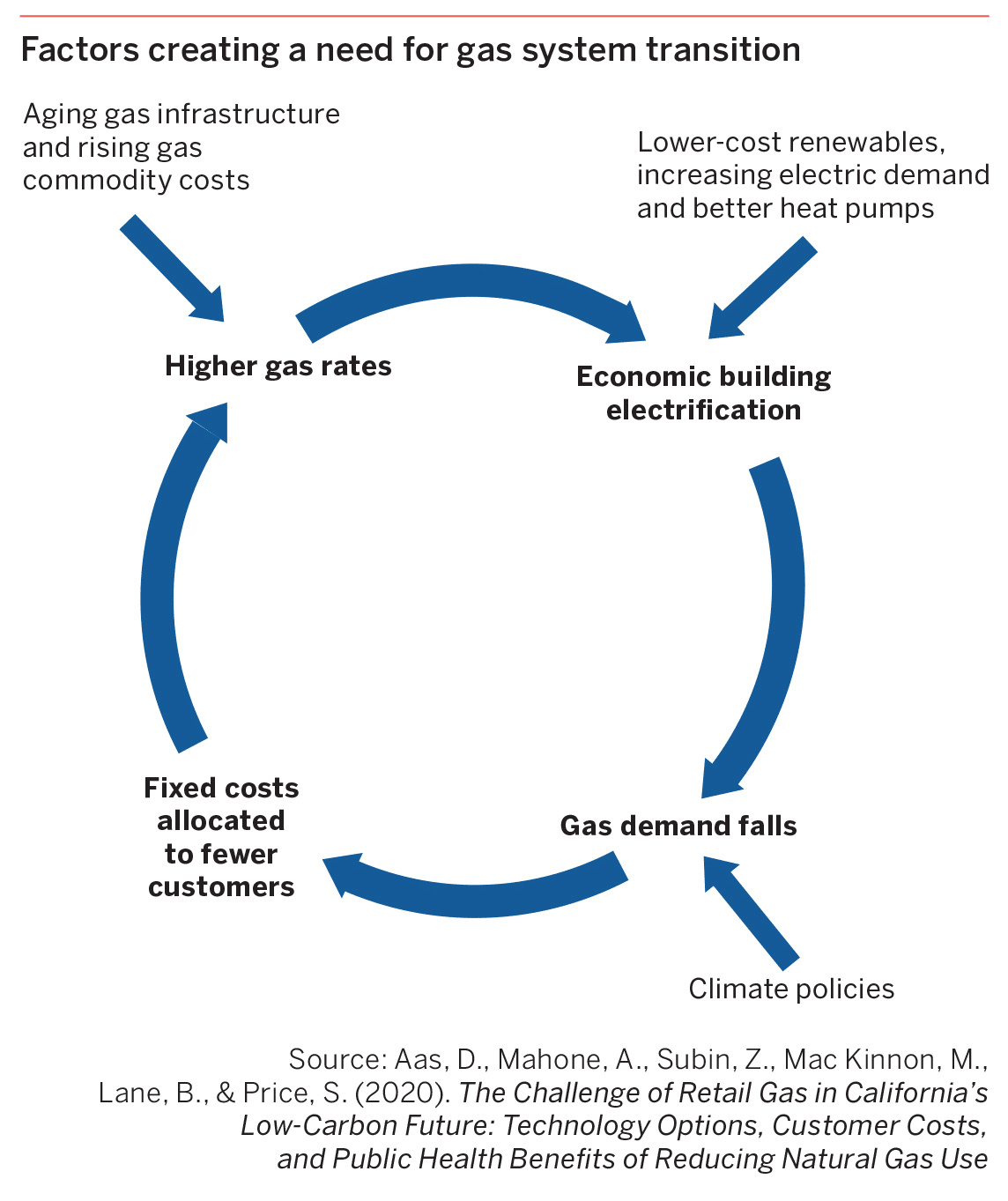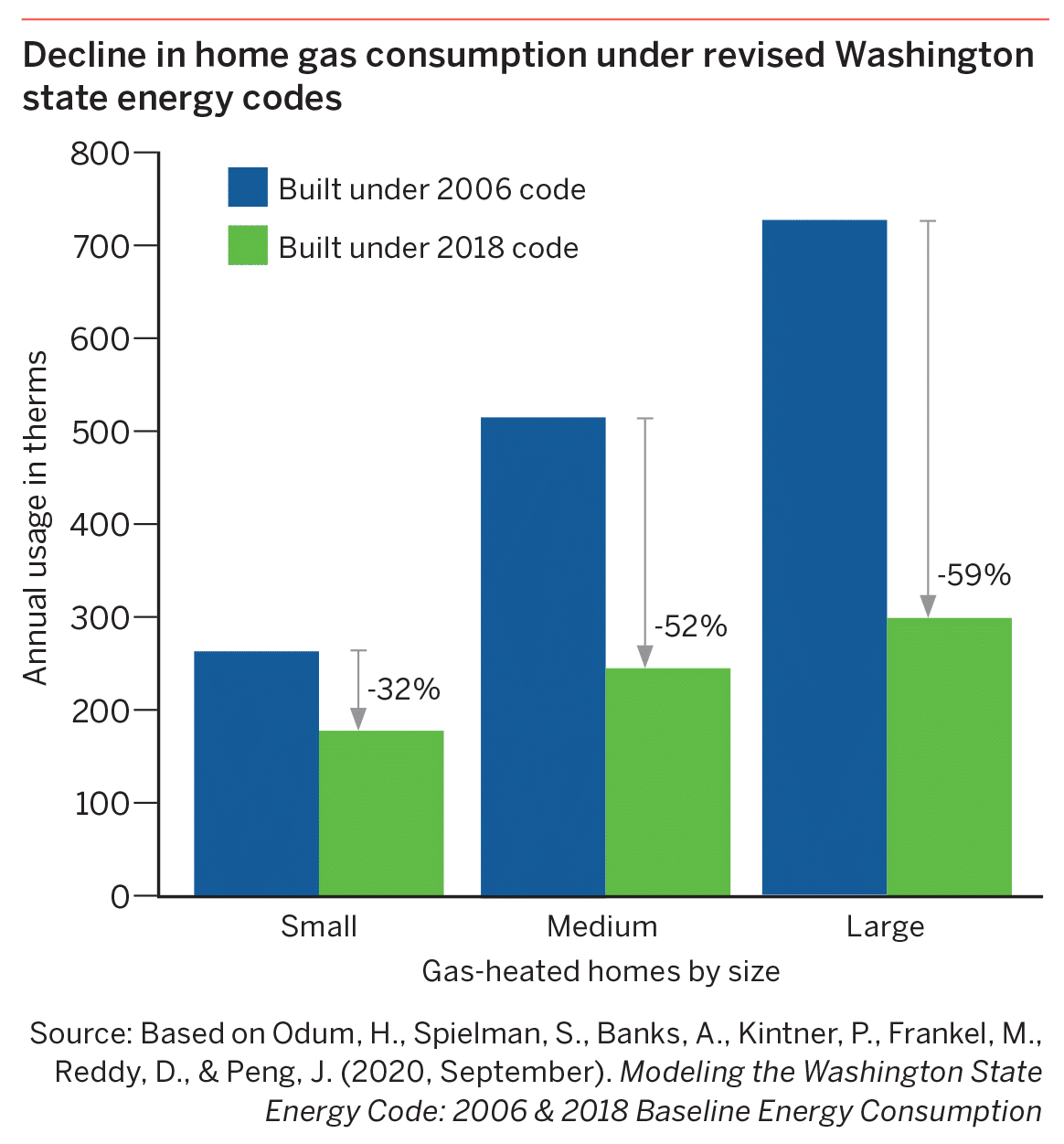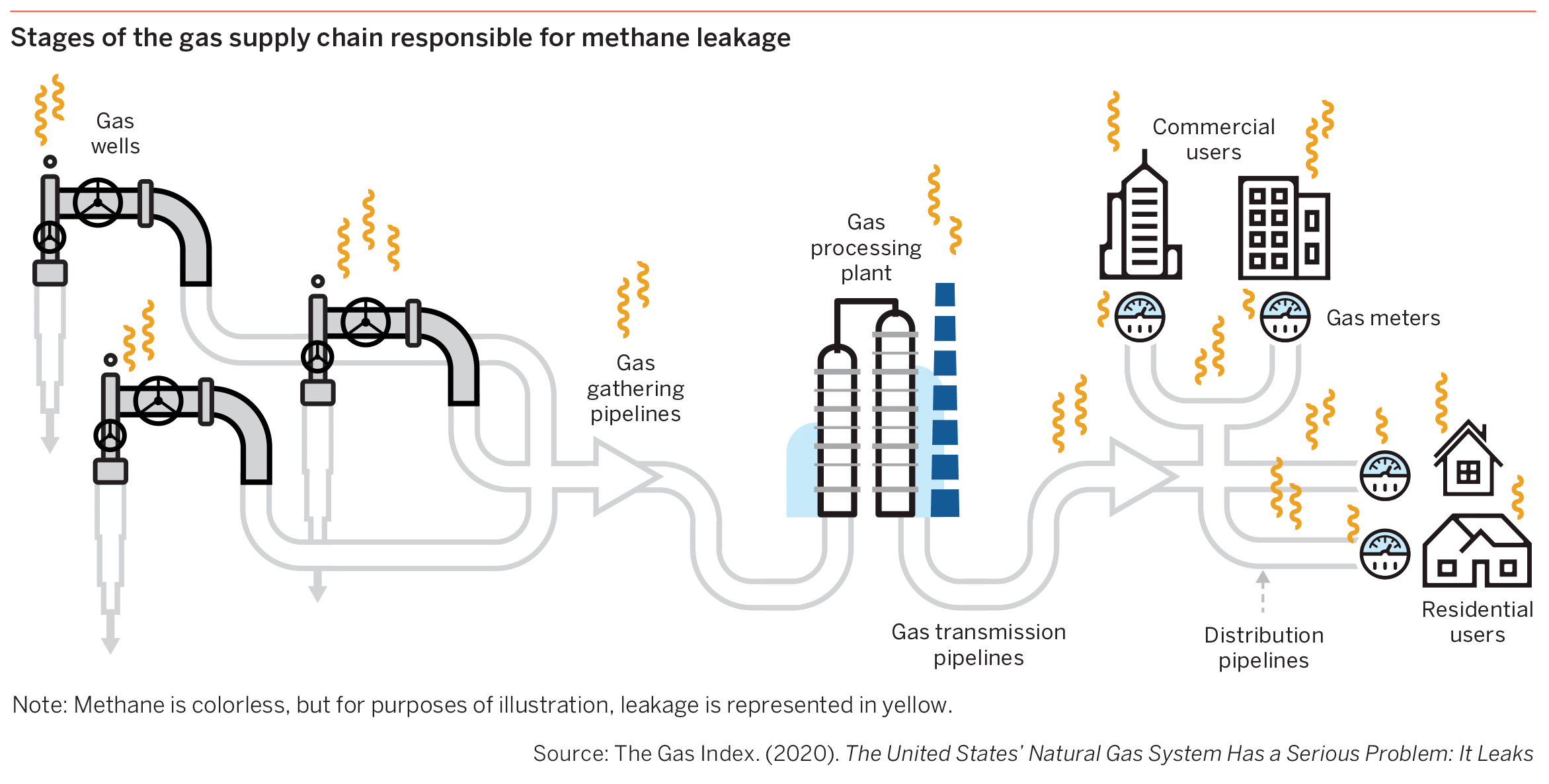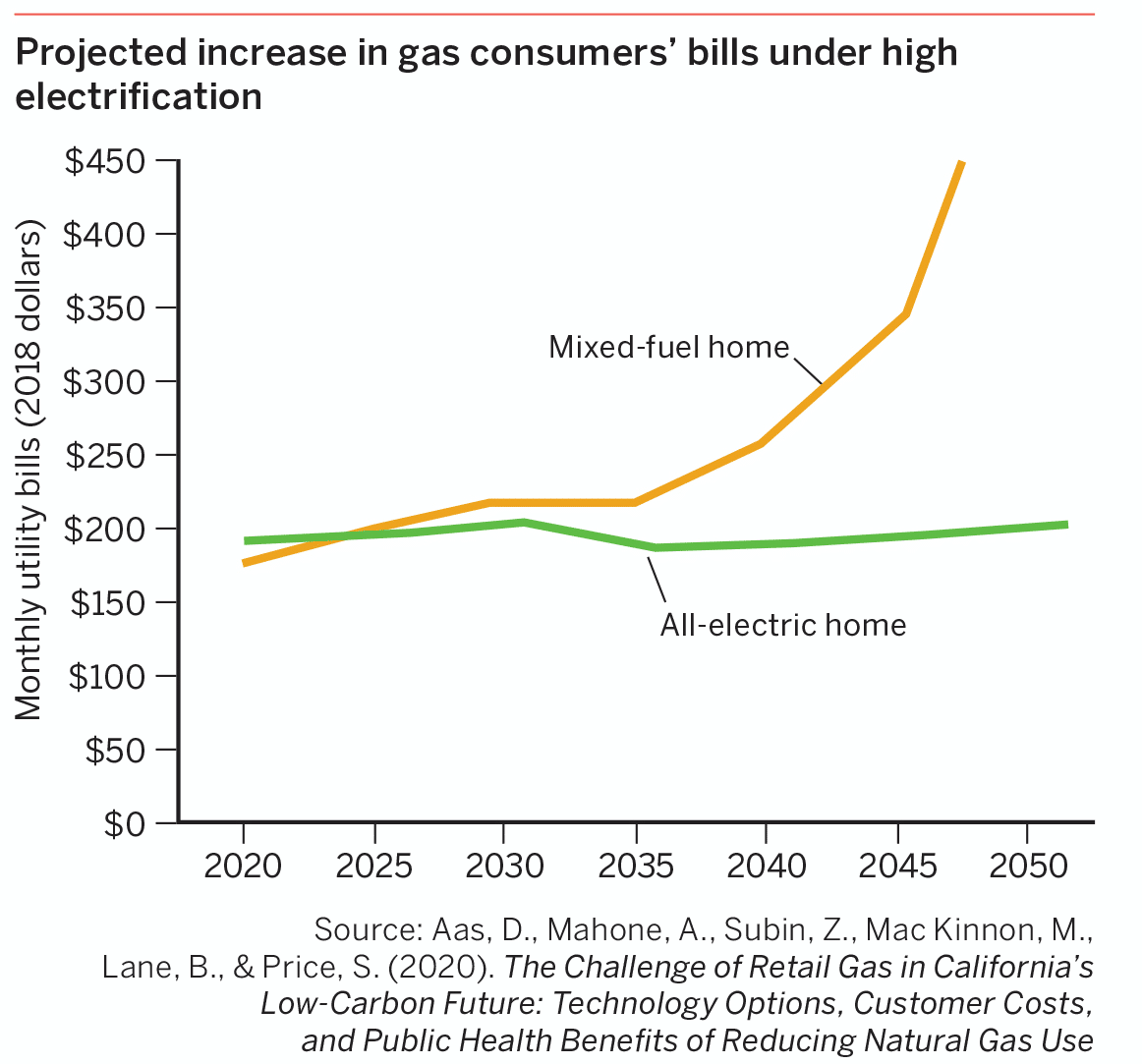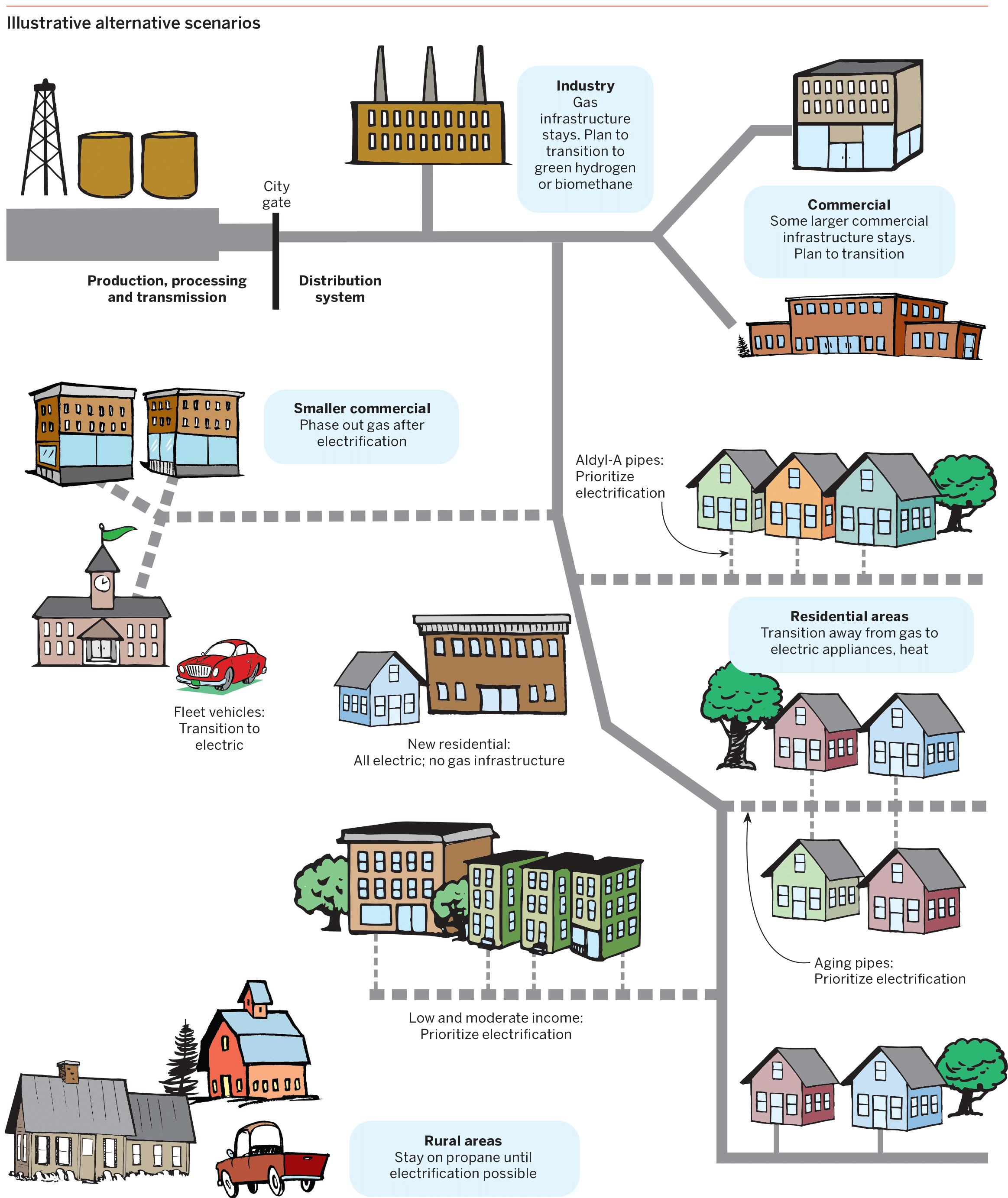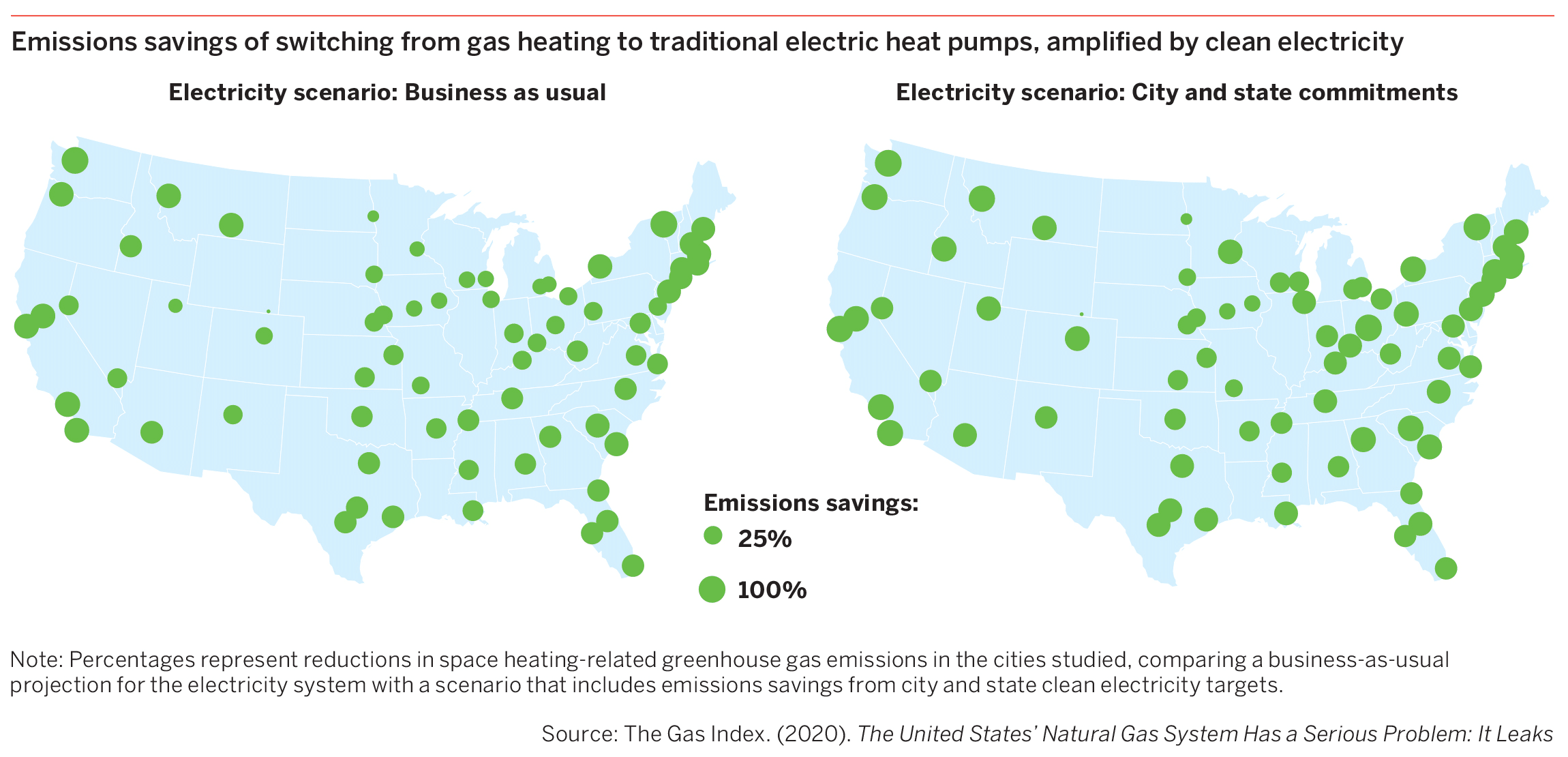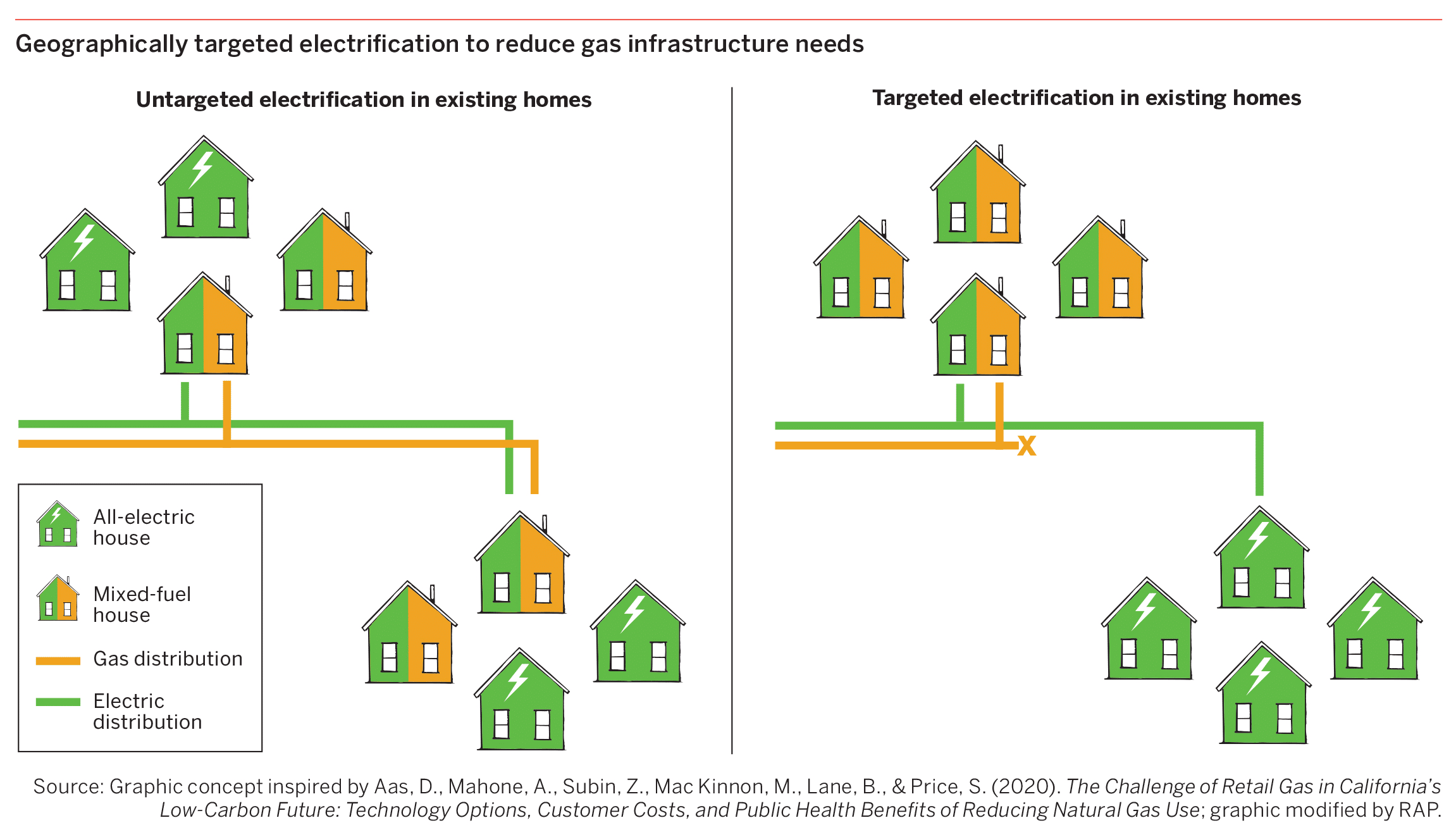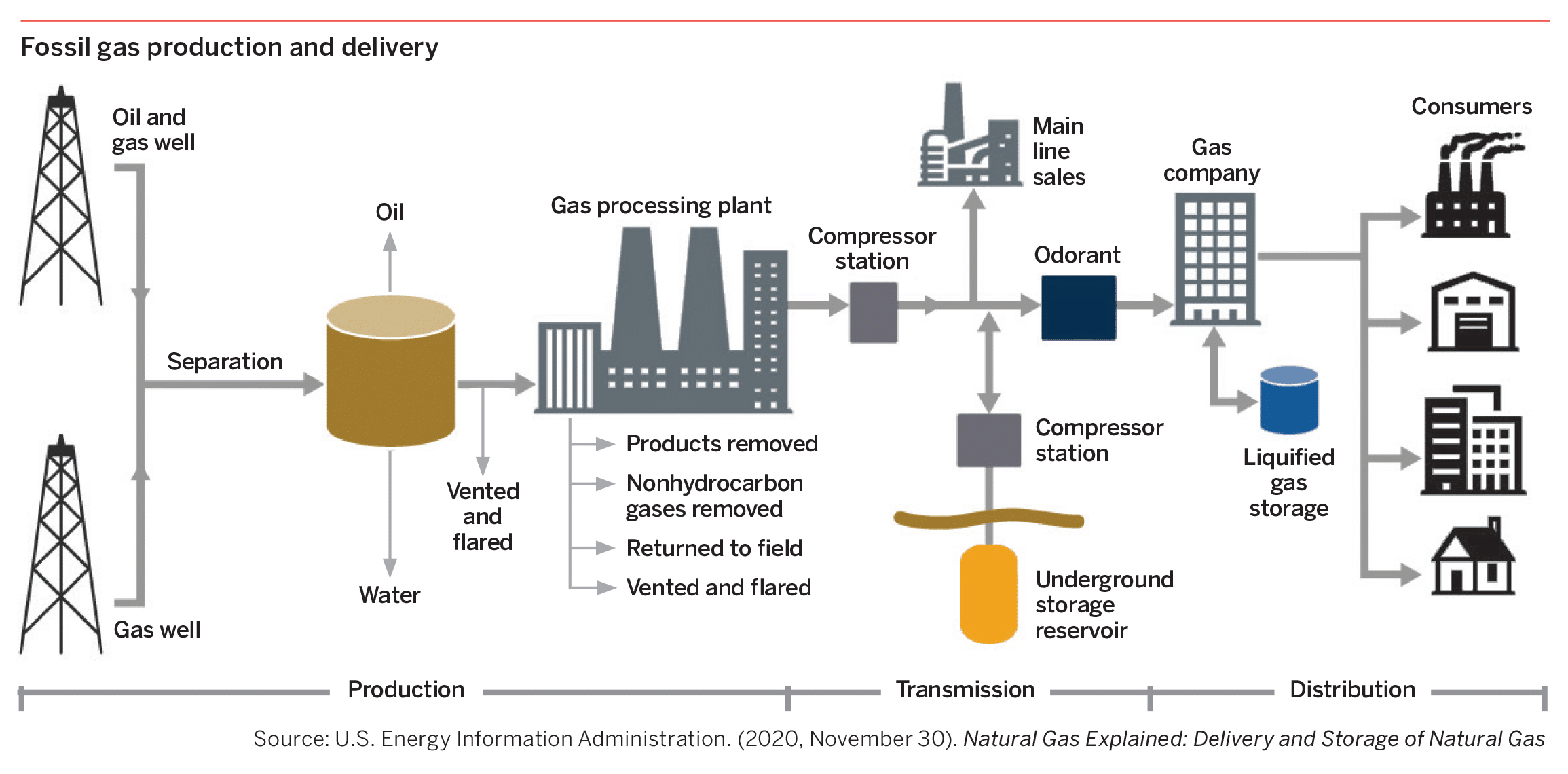About this Report:
The way we use fossil gas as a fuel for heating buildings and other end uses is rapidly changing. Efficiency gains and improved electric end-use technologies are constraining demand for gas. At the same time, the urgency to address climate change is increasing, with the new U.S. national target to cut greenhouse gas emissions by more than half by 2030 adding to existing state-level decarbonization policies. Increased awareness of the health and safety risks of fossil gas is also accelerating the transition to other sources of energy. These shifts are happening as gas utility distribution systems in many places are aging — meaning that utilities may be seeking approval for major investments while the size of their customer base is poised to shrink. Regulators and utilities that do not get ahead of these trends may face the need to impose unsustainable rate increases on customers, likely imposing high costs on those who can least afford it.
These changes mean that the current paradigm for gas utility regulation is coming under pressure, and regulators need a range of practical options to consider as they confront the changing circumstances. This report offers recommendations that can serve as building blocks to facilitate the gas transition in an efficient and equitable way. Our recommendations fall into three categories:
- Revitalizing gas planning through a robust stakeholder process, dynamic system mapping, scenario analysis and short- and long-term transition plans.
- Enhancing energy efficiency and electrification programs by removing barriers to fuel-switching, expanding and coordinating programs, considering non-pipeline alternatives, and targeting electrification geographically.
- Reforming gas rate-making by lowering the risk of rate impacts, updating cost allocation and rate design, and better aligning utility incentives with customer objectives and public policy goals.
Regulators may use the policy tools within this report to enable a smooth transition that maintains the safety and reliability of the gas system, addresses possible impacts to disadvantaged communities, and supports access to crucial energy services at reasonable rates for everyone. This toolkit also includes the following:
In a webinar presentation, Megan Anderson, Max Dupuy, Mark LeBel and moderator Richard Sedano discussed how planning, energy efficiency and electrification programs, and rate-making can pave the way to a smooth transition from fossil gas to other forms of energy for end uses.
Key Graphics
Download the figures below for more info.




